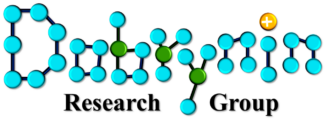Computational Design of Soft Matter
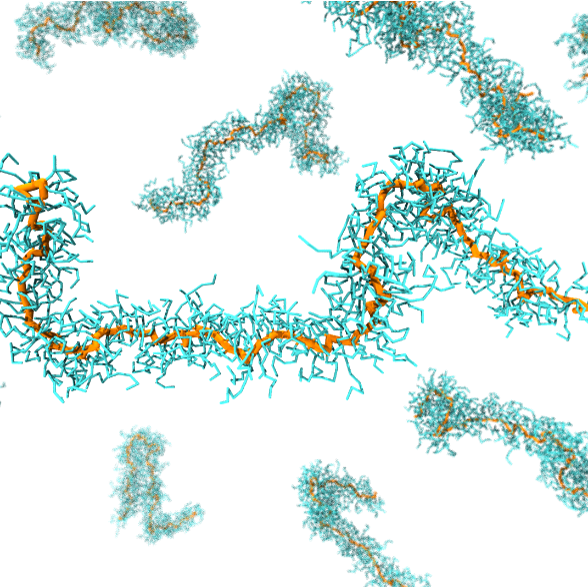
Design elastic materials with macromolecular architectures that mimic the mechanical behavior of biological tissues.
-

Brush Architecture and Network Elasticity: Path to the Design of Mechanically Diverse Elastomers
Mitchell Maw, Benjamin J. Morgan, Erfan Dashtimoghadam, Yuan Tian, Egor A. Bersenev, Alina V. Maryasevskaya, Dimitri A. Ivanov, Krzysztof Matyjaszewski, Andrey V. Dobrynin, and Sergei S. Sheiko We unveil universal correlations between architectural parameters and nonlinear elastic properties of brush polymer networks. A comprehensive library of poly(n-butyl acrylate), poly(dimethylsiloxane), … Read more
-

Theory and Simulations of Hybrid Networks
Michael Jacobs, Heyi Liang, and Andrey V. Dobrynin Hybrid networks are made of different types of polymer strands, which could differ by their degrees of polymerization (DPs), chemical structure, or rigidity (Kuhn length). Examples of such networks include biological networks … Read more
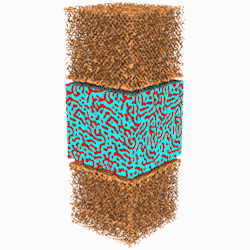
Control the hydrolytic degradation of poly(ester urea)-based biomaterials through the chemical structure.
-

Sugar-Based Polymers with Stereochemistry-Dependent Degradability and Mechanical Properties
Connor J. Stubbs, Joshua C. Worch, Hannah Prydderch, Zilu Wang, Robert T. Mathers, Andrey V. Dobrynin, Matthew L. Becker, and Andrew P. Dove Stereochemistry in polymers can be used as an effective tool to control the mechanical and physical properties of … Read more
-

Degradation of Block Copolymer Films Confined in Elastic Media: Molecular Dynamics Simulations
Ryan Sayko, Zilu Wang, Heyi Liang, Matthew L. Becker, and Andrey V. Dobrynin We performed coarse-grained molecular dynamics simulations of swelling and degradation of copolymer films confined within polymer networks with different values of shear modulus. The microphase separated copolymer … Read more
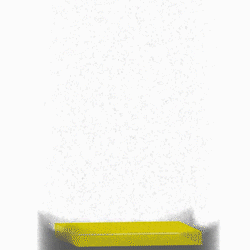
Capture the features of CLIP 3D printing techniques to optimize the printer design for printing soft materials.
-

Computer Simulations of Continuous 3-D Printing
Zilu Wang, Heyi Liang, and Andrey V. Dobrynin 3-D printing is a revolutionary manufacturing technique which makes it possible to fabricate objects of any shape and size that are hard to reproduce by traditional methods. We develop a coarse-grained molecular … Read more
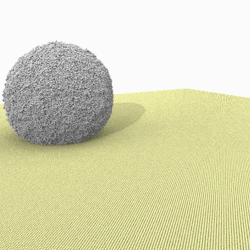
Understand rolling dynamics and contact mechanics of active nanoparticles as drug delivery vehicles.
-

Elastocapillarity and rolling dynamics of solid nanoparticles on soft elastic substrates
Yuan Tian, Heyi Liang, and Andrey V. Dobrynin The motion of nanoparticles on soft surfaces is the result of interplay between capillary, elastic and friction forces. To elucidate the importance of the different contributions controlling nanoparticle rolling dynamics on soft … Read more
-

Rolling Dynamics of Nanoscale Elastic Shells Driven by Active Particles
Yuan Tian, Heyi Liang, and Andrey V. Dobrynin Self-propelled elastic shells capable of transducing energy to rolling motion could have potential applications as drug delivery vehicles. To understand the dynamics of the nanoscale size elastic shells, we performed molecular dynamics … Read more
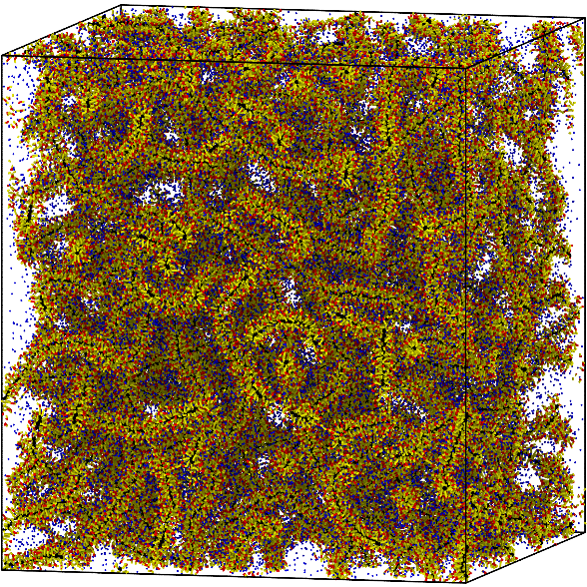
Understand the effect of electrostatic interactions in determining static and dynamic properties in solutions and gels.
-

Quantifying the Effect of Multivalent Ions in Polyelectrolyte Solutions
Michael Jacobs, Carlos G. Lopez, and Andrey V. Dobrynin We implemented a scaling approach, based on the relationship between the solution correlation length ξ = lgν/B and the number of repeat units per correlation blob g for polymers with repeat … Read more
-

Charged Polymers: From Polyelectrolyte Solutions to Polyelectrolyte Complexes
Ryan Sayko, Yuan Tian, Heyi Liang, and Andrey V. Dobrynin Coarse-grained molecular dynamics simulations, random phase approximation (RPA) approach, and scaling analysis are used to study static and dynamic properties of concentrated polyelectrolyte solutions of positively charged chains with the … Read more
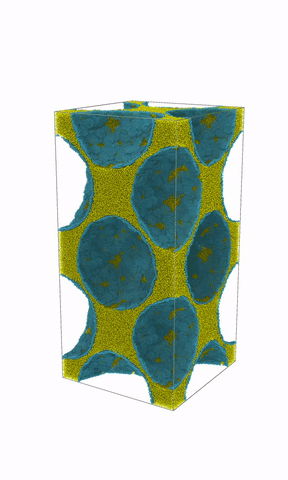
Create a hydrophobic graphene/polymer composite foam that can absorb organic solvents.
-

Electrical Conductivity of Graphene−Polymer Composite Foams: A Computational Study
Zilu Wang, Yuan Tian, Heyi Liang, Douglas H. Adamson, and Andrey V. Dobrynin We use a combination of the coarse-grained molecular dynamics simulations and finite difference method calculations to study electromechanical coupling in composite polymer/graphene foams. In these foams, graphene … Read more
-

From Graphene-like Sheet Stabilized Emulsions to Composite Polymeric Foams: Molecular Dynamics Simulations
Zilu Wang, Heyi Liang, Douglas H. Adamson, and Andrey V. Dobrynin We use coarse-grained molecular dynamics simulations to study the formation of composite polymeric foams made by templated polymerization of emulsions stabilized by graphene sheets (G-sheets) acting as 2D surfactants. … Read more
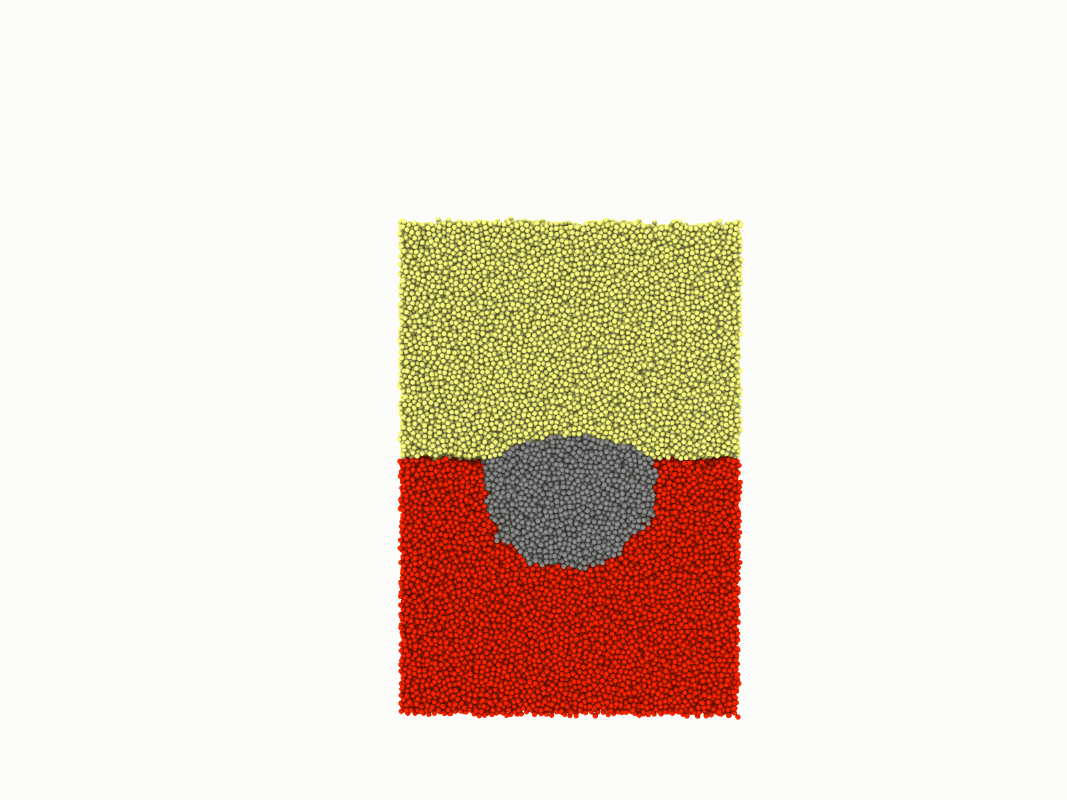
Understand the adhesion and wetting properties of nanoparticle/soft matter interfaces.
-

Gluing Interfaces with Soft Nanoparticles
Ryan Sayko, Zhen Cao, Heyi Liang, and Andrey V. Dobrynin Nanoparticles have been recently shown to be able to act as effective adhesives capable of binding two soft materials together. We performed coarse-grained molecular dynamics simulations to study contact mechanics … Read more
-

How To Measure Work of Adhesion and Surface Tension of Soft Polymeric Materials
Yuan Tian, Maria Ina, Zhen Cao, Sergei S. Sheiko, and Andrey V. Dobrynin Knowledge of the work of adhesion and surface tension directs the design of new materials for coatings, adhesives, and lubricants. We develop an approach to determine both … Read more
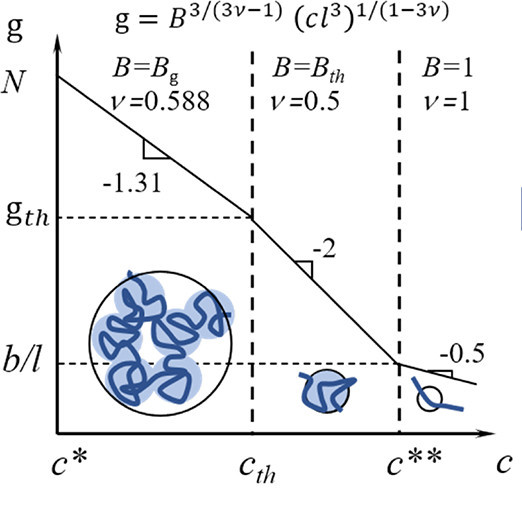
Utilize the properties of polymer solutions to extract molecular parameters of polymer chains.
-

Universality in Solution Properties of Polymers in Ionic Liquids
Ryan Sayko, Michael Jacobs, and Andrey V. Dobrynin Knowledge of the interaction parameters for polymers in different solvents is crucial for exploring the viscoelastic properties and processing capabilities of polymer solutions. Here, we apply a scaling theory of semidilute polymer solutions … Read more
-

Quantifying Properties of Polysaccharide Solutions
Ryan Sayko, Michael Jacobs, and Andrey V. Dobrynin We apply a scaling theory of semidilute polymer solutions to quantify solution properties of polysaccharides such as galactomannan, chitosan, sodium carboxymethyl cellulose, hydroxypropyl methyl cellulose, methyl cellulose, xanthan, apple pectin, cellulose tris(phenyl … Read more
